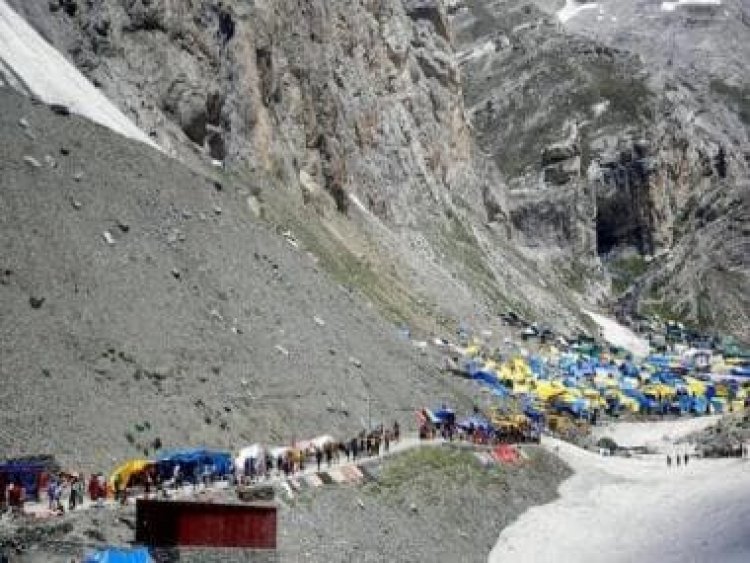Cloudburst near Amarnath cave: A look back at five worst cloudbursts in India
Cloudburst near Amarnath cave: A look back at five worst cloudbursts in India

A cloudburst near the holy cave of Amarnath on Friday evening has left 13 dead and 40 missing.
Officials said the cloudburst, which occurred around 5.30 pm, has seen the National Disaster Response Force, State Disaster Response Force, Indo-Tibetan Border Police, Indian Army and other associated agencies swing into action.
Over the decades, India has been witness to many cloudbursts that have resulted in mass casualties.
Let’s take a look at some of the worst cloudbursts in history:
Great Musi flood of 1908
On 26 September, 1908, Hyderabad’s surrounding areas began witnessing rain. The cause was a cyclone in the Bay of Bengal.
As per The Hindu, two days later, the Musi river basin had logged 98.57 cm rainfall. Of the 788 tanks and lakes in the river basin, 221 breached due to the cloudburst.
As per Deccan Herald, the city recorded 153.2 mm on 27 September.
At 11 am on 28 September, an estimated 4,25,000 cusecs of water raced through the city swirling and sweeping away over 19,000 homes, and killing about 15,000 people.
It was the floods of 1908 that persuaded the Nizam to build flood mitigation structures, including the fortification of the Musi banks in the city and two reservoirs upstream to hold the rainwater.
2013 Uttarakhand
In 2013, Uttarakhand’s Kedarnath received unprecedented heavy rainfall between 14 and 17 June.
The banks of the Chorabari lake collapsed due to a cloudburst, resulting in a major flash flood that caused widespread damage in the ecologically fragile Himalayan region.
As per Free Press journal, the rainfall led to the melting of the Chorabari glacier and the eruption of the Mandakini river. The floods affected large parts of Uttarakhand, Himachal Pradesh and Western Nepal.
The heavy rainfall caused massive flash floods and landslides resulting in the death of residents and tourists as well as extensive damage to property. Reportedly the worst hit was the Kedarnat
Worse, bad weather delayed the launch of relief and rescue operations after the Kedarnath deluge. The magnitude of the tragedy at that time could also not be immediately realised.
Several roads, buildings and other structures were washed away and the estimated toll was around 10,000, with over 3,000 persons missing, as per the state government.
Free Press Journal quoted ecologist Chandra Prakash Kala as saying “the approximate cost of damaged bridges and roads was $285 million, dam projects worth $ 30 million and loss to state tourism worth $195 million.”
Mumbai cloudburst 2005
On 26 July, 2005, Mumbai received an astonishing 944 mm of rain in just 24 hours, the highest rainfall in a century.
What happened next was pure chaos – flights were cancelled, trains halted, water and power supply stopped, schools and offices were shut, cell phone networks were down.
Locals were left stranded in offices, schools, colleges and even in their cars. Many had to seek help from strangers. Thousands more were stranded at the train stations, bus depots and the airport.
It took a few days for things to return to normal and waters to recede.
Thousands were left dead.
Every time it rains heavily in Mumbai, people remember 26 July.
Jammu and Kashmir 2010
In 2010, flash floods, caused by a cloudburst transformed the picturesque landscape of Leh into a virtual disaster zone with buildings, houses and schools completely destroyed.
The cloudburst triggered torrential rains, mudslides and flash floods.
It claimed about 180 lives and injured about 400 people besides causing widespread damage to public and private property.
A number of government offices, and the Indo-Tibetan Border Police camp were damaged and communication lines snapped.
Telephone towers and highways leading to the region were also affected and the Leh-Srinagar highway blocked.
It took the army and air force several hours to clear the Leh airport, where parts of the runway were covered in six inch slush.
1998 Uttarakhand
Heavy rain and a cloudburst caused one of India’s worst landslides at Malpa village in Kali valley of Kumaon, Uttarakhand, 60 kilometres from Dharchula on the Indo-Tibet border.
Around 250 people including 60 Kailash Mansarovar pilgrims were left dead in the landslide which washed away the village. Among them Odissi dancer Protima Bedi, mother of Pooja Bedi and former wife of film star Kabir Bedi.
With inputs from agencies
Read all the Latest News, Trending News, Cricket News, Bollywood News,
India News and Entertainment News here. Follow us on Facebook, Twitter and Instagram.
What's Your Reaction?





























































